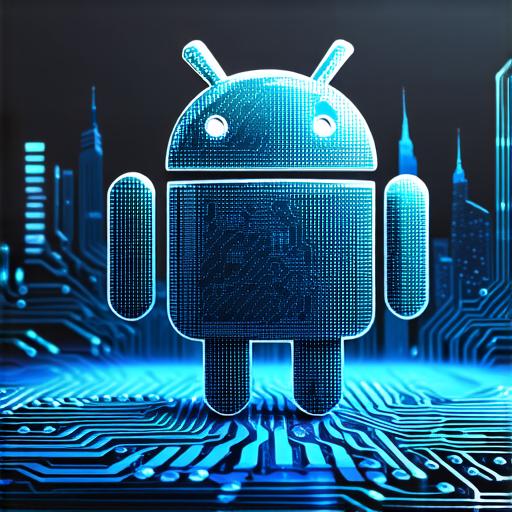1. AndroidX
AndroidX is the new version of Android’s build system that offers improved performance, stability, and security. It replaces Gradle as the primary build tool for Android apps, and it includes a number of new features that make it easier to develop and maintain your app code. With AndroidX, you can easily update your dependencies, manage multiple versions of your app, and use the latest version of the Android SDK without worrying about compatibility issues.
2. Jetpack Compose
Jetpack Compose is a new framework for building user interfaces (UI) in Android apps. It simplifies the process of creating beautiful, responsive UIs by allowing you to write your code using Kotlin and compose functions instead of XML. With Jetpack Compose, you can create custom views, animations, and gestures without having to write boilerplate code, which saves you time and effort.
3. Android KTX


Android KTX is a library that simplifies the process of using Kotlin in your Android app code. It provides a set of extension functions that allow you to use Kotlin syntax instead of Java syntax for many common operations, such as creating views, setting values, and handling events. With Android KTX, you can write cleaner, more concise code that is easier to read and maintain.
4. AndroidX Bombshells
AndroidX Bombshells is a tool that helps you automate the process of adding dependencies to your app’s build.gradle file. It allows you to add multiple dependencies with just a single command, which saves you time and reduces the risk of errors. With AndroidX Bombshells, you can easily keep your app up to date with the latest dependencies without having to manually modify your build file.
5. Flutter
Flutter is an open-source mobile development framework that allows you to build cross-platform apps using a single codebase. It uses Dart as its primary programming language, which makes it easy to write clean and concise code that runs on both iOS and Android devices. With Flutter, you can create beautiful, responsive UIs that look and feel the same across different platforms, without having to write separate codebases for each platform.
6. TensorFlow Lite
TensorFlow Lite is a lightweight version of Google’s popular machine learning framework, TensorFlow. It allows you to run machine learning models on Android devices, which can be used for a variety of applications such as image recognition, speech recognition, and natural language processing. With TensorFlow Lite, you can easily add machine learning capabilities to your app without having to write complex code or rely on third-party libraries.
7. AndroidX Architecture Components
AndroidX Architecture Components is a set of libraries that help you build robust, scalable, and maintainable Android apps using the Model-View-ViewModel (MVVM) architecture pattern. It provides a set of tools for managing data, networking, and other app components, which helps you write cleaner and more modular code. With AndroidX Architecture Components, you can easily test your app’s components in isolation, which makes it easier to identify and fix bugs.
8. AndroidX Navigation Compose
AndroidX Navigation Compose is a new way of building navigation in Android apps using Jetpack Compose. It simplifies the process of creating navigation graphs and managing navigation states by providing a set of composable functions that allow you to build custom views and animations. With AndroidX Navigation Compose, you can create seamless navigation experiences for your users without having to write boilerplate code or rely on third-party libraries.
9. AndroidX Room
AndroidX Room is a lightweight object-relational mapper (ORM) that allows you to easily interact with SQLite databases in your Android app code. It provides a set of tools for managing database schema, queries, and transactions, which helps you write cleaner and more efficient code. With AndroidX Room, you can easily test your database operations in isolation, which makes it easier to identify and fix bugs.
10. AndroidX ViewModel
AndroidX ViewModel is a new version of the ViewModel class that allows you to manage app state and UI interactions using a single, reusable component. It provides a set of tools for managing lifecycle, events, and other app components, which helps you write cleaner and more modular code. With AndroidX ViewModel, you can easily test your app’s components in isolation, which makes it easier to identify and fix bugs.
Summary:
In conclusion, these are just a few of the cutting-edge tools that have been introduced by Google and other tech giants to help you streamline your Android development process and create better apps. With the constant evolution of technology, it’s important for Android developers to stay up to date with the latest developments in the field. By incorporating these tools into your app development workflow, you can save time, improve productivity, and create more robust and scalable apps. So, don’t be left behind – start exploring these tools today and see how they can help you take your Android app development to the next level!
FAQ:
1. What is AndroidX?
AndroidX is the new version of Android’s build system that offers improved performance, stability, and security. It replaces Gradle as the primary build tool for Android apps, and it includes a number of new features that make it easier to develop and maintain your app code.
2. How does Jetpack Compose simplify UI development in Android apps?
Jetpack Compose simplifies the process of creating beautiful, responsive UIs by allowing you to write your code using Kotlin and compose functions instead of XML.
3. What is AndroidKTX, and how does it simplify Kotlin code in Android app development?
AndroidKTX is a library that simplifies the process of using Kotlin in your Android app code. It provides a set of extension functions that allow you to use Kotlin syntax instead of Java syntax for many common operations, such as creating views, setting values, and handling events.

4. How can AndroidX Bombshells help you automate the process of adding dependencies to your app’s build.gradle file?
AndroidX Bombshells allows you to add multiple dependencies with just a single command, which saves you time and reduces the risk of errors.
5. What are the benefits of using Flutter for mobile app development?
Flutter is an open-source mobile development framework that allows you to build cross-platform apps using a single codebase. It uses Dart as its primary programming language, which makes it easy to write clean and concise code that runs on both iOS and Android devices.
6. What is TensorFlow Lite, and how does it enable machine learning on Android devices?
TensorFlow Lite is a lightweight version of Google’s popular machine learning framework, TensorFlow. It allows you to run machine learning models on Android devices, which can be used for a variety of applications such as image recognition, speech recognition, and natural language processing.
7. What are the AndroidX Architecture Components, and how do they help you build robust, scalable, and maintainable Android apps?
AndroidX Architecture Components is a set of libraries that help you build robust, scalable, and maintainable Android apps using the Model-View-ViewModel (MVVM) architecture pattern. It provides a set of tools for managing data, networking, and other app components, which helps you write cleaner and more modular code.
8. What is AndroidX Navigation Compose, and how does it simplify navigation in Android apps?
AndroidX Navigation Compose is a new way of building navigation in Android apps using Jetpack Compose. It simplifies the process of creating navigation graphs and managing navigation states by providing a set of composable functions that allow you to build custom views and animations.
9. What is AndroidX Room, and how does it simplify database interactions in Android app development?
AndroidX Room is a lightweight object-relational mapper (ORM) that allows you to easily interact with SQLite databases in your Android app code. It provides a set of tools for managing database schema, queries, and transactions, which helps you write cleaner and more efficient code.
10.
